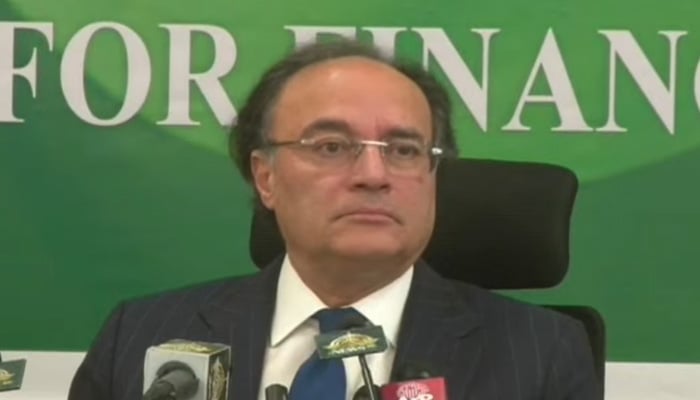ISLAMABAD: Finance Minister Muhammad Aurangzeb on Wednesday addressed a post-budget press conference to elaborate on the government’s fiscal roadmap and priorities for the financial year 2025–26 (FY26).
The session, held a day after the unveiling of the Rs17.57 trillion federal budget, began amid tension as journalists initially walked out in protest over the absence of a customary technical briefing by the Federal Board of Revenue (FBR).
The budget sets a GDP growth target of 4.2% while slashing overall federal expenditure by 7%. The government has proposed relief measures for the salaried class, including tax cuts and an increase in the exemption threshold.
The budget projects a fiscal deficit of 3.9% of GDP and assumes inflation will ease to 7.5% during FY26. Defence spending is set to rise by 20.2% to Rs2,550 billion, while the FBR has been tasked with collecting Rs14,131 billion in taxes — an 18% increase from the previous year — pushing the tax-to-GDP ratio to 10.1%.
It also proposes new tax slabs for the salaried class — which has borne the brunt of the tax burden — with the minimum rate reduced to 4% from the existing 15% for taxpayers earning up to Rs2.2 million annually.
The tax rate for individuals making between Rs600,000 and Rs1.2 million a year will drop from 5% to 2.5%.
Also, it suggests strict measures against non-filers to increase Pakistan’s tax net which, if approved, will leave non-filers locked out of the country’s financial system.
Briefing the media today, the finance czar elaborated on the tariff reforms, saying that the tariff has been brought down to zero on 4,000 tariff lines out of the total 7,000.
“The tariff reforms have not been carried out for the last 30 years,” he lamented while stressing the significance of tariff reforms proposed in the budget, saying that not only were they necessary for economic development but would also contribute towards an increase in exports.
Noting that pensions and salaries have to be linked to inflation, Aurangzeb said that the Centre would work with the provinces for the development of agriculture and livestock.
There should be a policy related to agriculture and livestock, he added.
This is a developing story and is being updated with more details.

